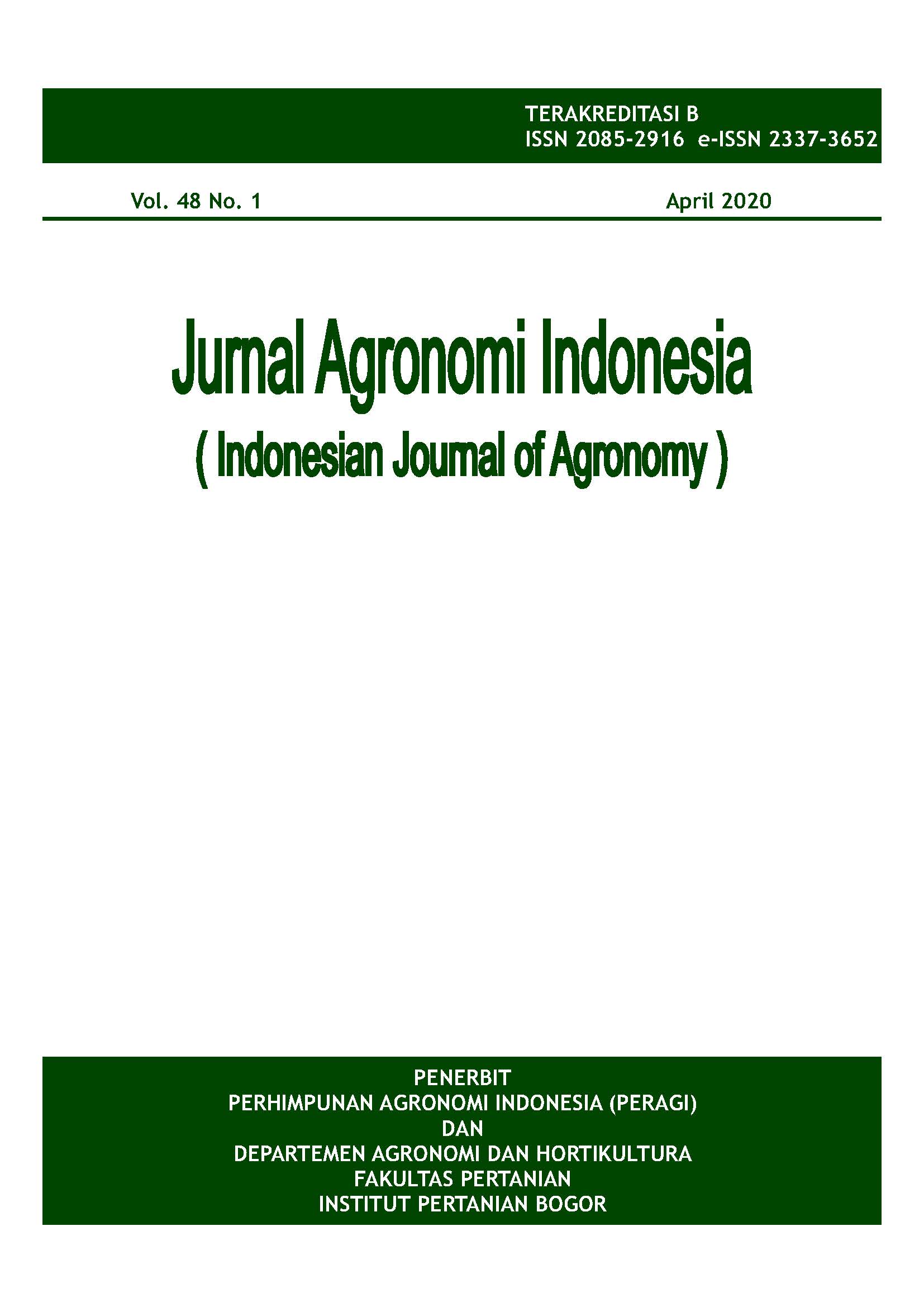Kelimpahan Vegetasi dan Simpanan Biji Gulma pada Pertanaman Jagung Berbeda Sejarah Pola Tanam di Lahan Kering
Abstract
Weed management is an important aspect in the dry land; however, weed resides in dry land like East Nusa Tenggara is rarely reported. The study aimed to evaluate weed species and its seed bank on maize fields from the different history of cropping patterns in order to develop effective weed control. The research was conducted in April-June 2019 at farmer fields at Kupang District, East Nusa Tenggara, Indonesia. Weeds were evaluated from four maize fields experienced a different history of cropping pattern (L1, L2, L3, and L4), and its seed bank from the depth of 0-10, 11-20, 21-30, and 31-40 cm were evaluated using seedling emergence method. The evaluation revealed 13 species at which 4 species exclusively were found in vegetation analysis, 2 species in the seed bank and 7 species in both vegetation and seed bank analysis. Dominant weed at podzolic L2 and L3 that experienced fallow for two months was Chloris barbata, while without fallow of podzolic L1 and grumusol L4 were Digitaria adscendens and Mazus japonicus, respectively. Cropping history and soil depths affected weed density, but depths of 0-20 cm had the highest density irrespective preceding the cropping pattern. Research implies both vegetation and seed bank analysis should be addressed and integrated in weed management.
Keywords: dry land, fallow, weed management, East Nusa Tenggara, vegetation analysis













